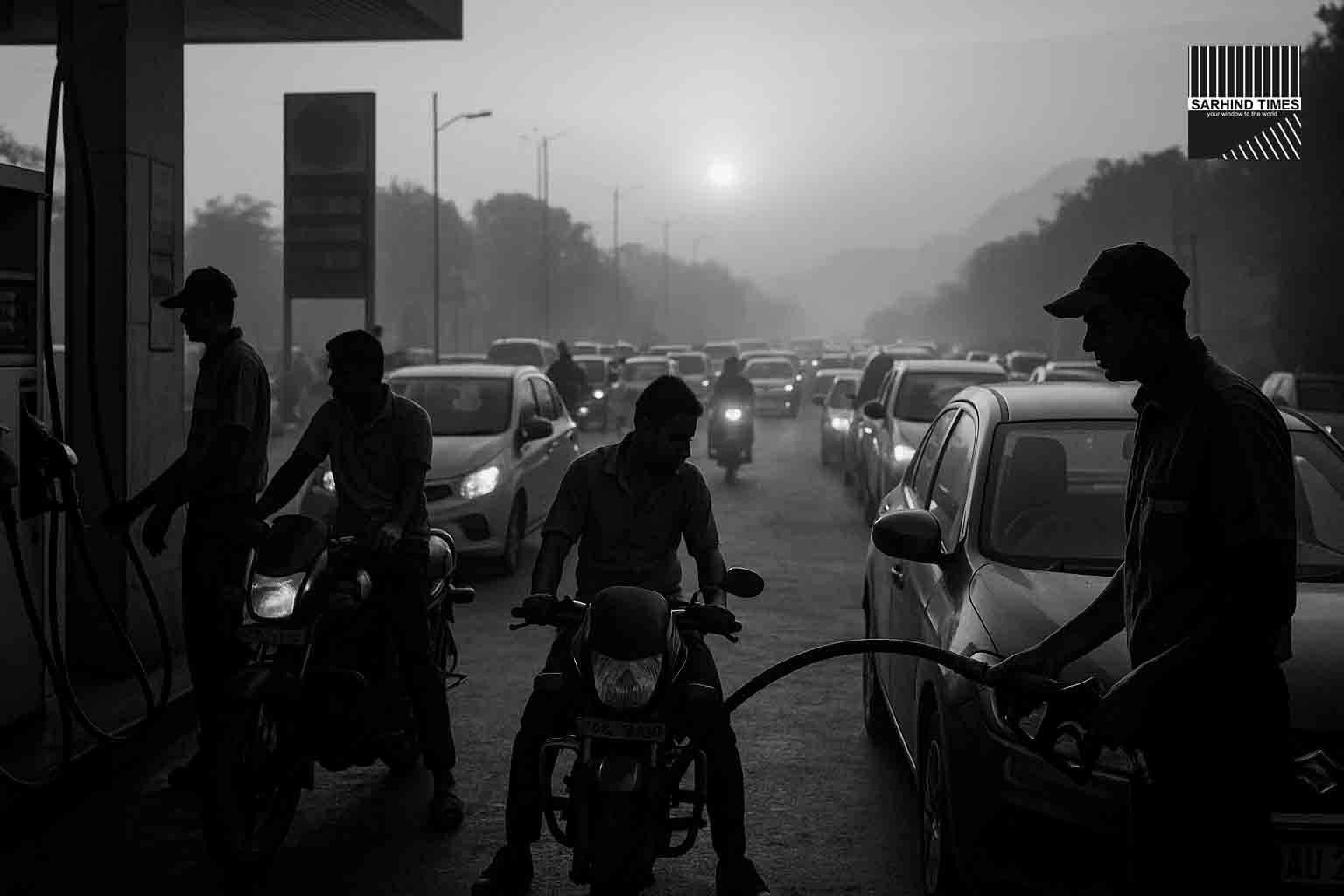For nearly ten months now, Indian consumers have experienced something unusual in the country’s volatile fuel market—stable petrol and diesel prices. As of this morning, fuel rates remain unchanged across metros, extending the freeze that began in December 2024.
In Delhi, petrol sells at around ₹94.77 per litre, while diesel remains close to ₹90.03 per litre in Mumbai. For households, transporters, and businesses, this steady pricing offers short-term relief and predictability. But behind the scenes, oil marketing companies (OMCs) and policymakers are carefully balancing global crude volatility, inflation management, and revenue implications.
Why Prices Remain Frozen
- Global crude trajectory: Brent crude has remained within a $80–90/barrel range in recent months.
- Festive season considerations: The government is keen to avoid retail shocks during high-consumption months.
- Inflation control: Fuel prices directly affect CPI inflation through transport and logistics costs.
- Policy signaling: Stability reassures both consumers and investors of a managed macro environment.
Impact on Consumers
For consumers, stable fuel prices translate into:
- Trip planning confidence: Families can budget for travel during Navratri, Diwali, and holiday seasons.
- Lower inflation pass-through: Reduced chance of sudden fare hikes in cabs, buses, or goods transport.
- Psychological comfort: In an economy where price spikes are frequent, predictability matters.
Impact on Businesses & MSMEs
For logistics operators and MSMEs, steady prices provide:
- Cost visibility for inventory stocking ahead of festivals.
- Easier freight contracts, as transporters don’t need to adjust tariffs weekly.
- Stable supply chains, especially for sectors dependent on intercity trucking.
However, smaller players worry that if crude spikes globally, OMCs may still bear under-recoveries, which could later be passed on abruptly.
The OMC Balancing Act
Oil Marketing Companies like IOC, BPCL, and HPCL have absorbed under-recoveries when global crude prices temporarily spiked. Analysts note:
- Margins are thin: Without adjustments, OMCs depend on government compensation or internal balancing.
- Election & policy cycles matter: Price freezes often align with political timelines.
- Refining spreads cushion: High margins on certain petroleum products have partly offset retail under-recoveries.
Inflation and the Macro Picture
Fuel prices contribute heavily to headline inflation:
- A ₹1 increase in petrol can ripple into food transport costs, raising CPI.
- Stable prices since Dec 2024 have anchored expectations, giving RBI breathing room on rates.
- Combined with recent GST 2.0 cuts on consumer goods, the freeze supports purchasing power.
Risks Ahead
Analysts caution that the freeze is not risk-free:
- Global crude shocks: Any flare-up in West Asia or OPEC+ supply cuts could push Brent past $95.
- Currency pressure: A weaker rupee could inflate India’s import bill.
- Fiscal stress: If OMCs absorb prolonged losses, it strains public-sector finances.
Political Economy of Fuel
Fuel pricing in India has always carried political weight. While deregulation was announced years ago, the reality is managed pricing—with freezes before elections and adjustments in quieter cycles.
For now, the political imperative of price stability outweighs calls for dynamic pricing.
Consumer Sentiment Ahead of Festivals
Transport operators, cab unions, and freight associations have welcomed the freeze. Retail consumers see it as a festival gift—but also worry about a post-season hike once political and demand pressures ease.
Expert Voices
- Energy analyst: “The freeze has tamed inflation expectations, but OMC margins are under stress.”
- MSME owner: “Stable diesel helps us quote transport-inclusive rates for Diwali orders.”
- Consumer advocate: “Predictability is good, but transparency on OMC under-recoveries is needed.”
Conclusion
India’s long freeze on petrol and diesel prices is both a boon and a balancing act. It has anchored inflation and aided consumers, but the burden on OMCs and the risk of sudden shocks remain.
For now, the steady rates give India’s economy breathing space through the festive season. But the real test will come if global crude markets turn volatile—will the freeze hold, or will the pump price shock return?
#Petrol #Diesel #FuelPrices #Inflation #CrudeOil #Transportation #OMCs #IndiaEconomy






















+ There are no comments
Add yours